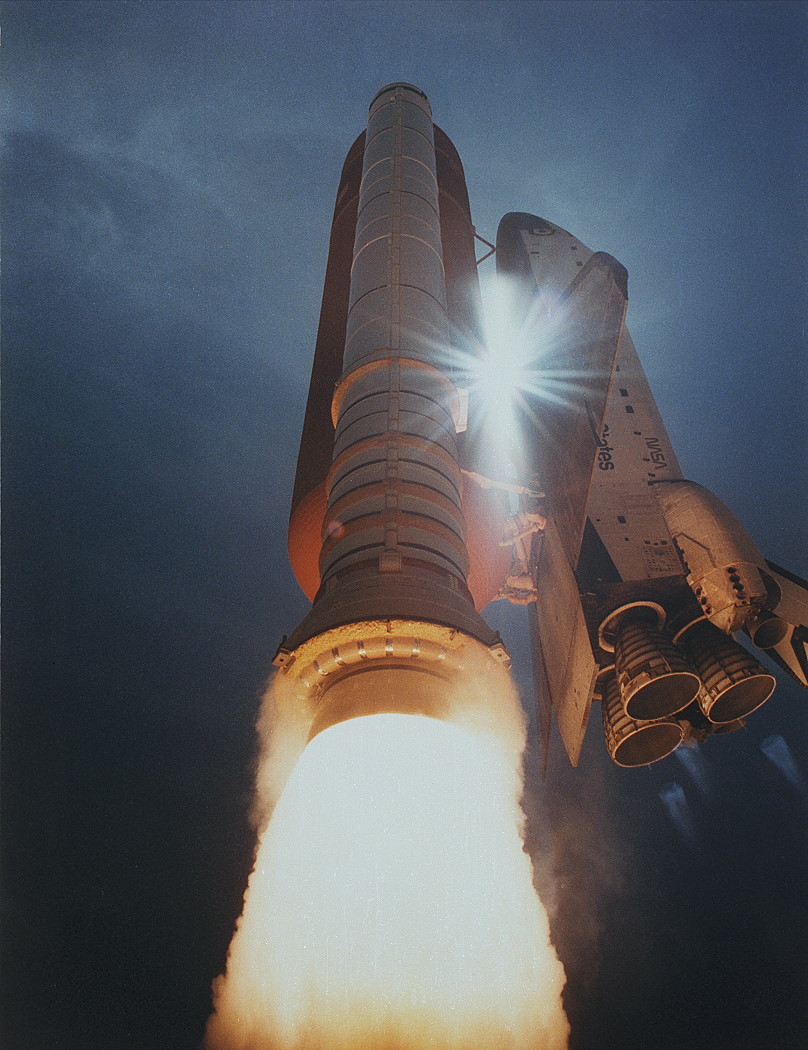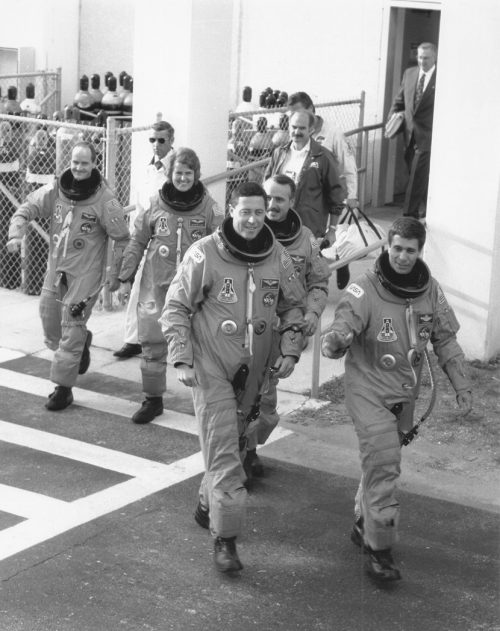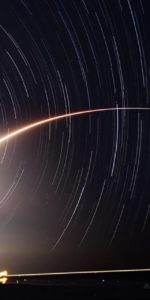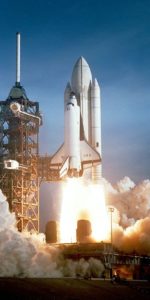
Twenty-five years ago, this month, Space Shuttle Atlantis flew a mission which harked back to the past and set in place a cornerstone to enable the exploration of the future. In August 1991, the crew of STS-43—Commander John Blaha, Pilot Mike Baker, and Mission Specialists Shannon Lucid, Jim Adamson, and David Low—rocketed into space to launch NASA’s fourth Tracking and Data Relay Satellite (TDRS). Part of a network of geostationary-orbiting communications and relay platforms for the shuttle and the space agency’s major scientific assets, TDRS was joined aboard Atlantis by a menagerie of research and technology investigations, many of which would evolve into systems for today’s International Space Station (ISS).
For Blaha, it was his third shuttle mission. In his NASA oral history, he recalled a conviction that every person who came back from space was psychologically “changed” in some way and became a “different” human being. When he returned from STS-33 in November 1989, he was finishing up his medical debriefing with a flight surgeon, when he asked an odd question. “Who else gives a debrief like me?” The flight surgeon replied that Shannon Lucid offered a similar insight after her missions. As circumstances transpired, the pair would fly two shuttle flights together and would meet in space a third time in September 1996, as Lucid wrapped up a six-month stay aboard Russia’s Mir space station and Blaha arrived for his own four-month stay.
Six months after STS-33, in May 1990, the STS-43 crew was named. Theirs was to be a five-day mission, originally targeted for May 1991 aboard Shuttle Discovery, to deploy TDRS-E, atop a Boeing-built Inertial Upper Stage (IUS) booster. A jubilant Blaha went directly to Lucid’s office with a request: after a day or two in orbit, they would exchange views on how each of them had “changed” whilst away from Earth. But in his oral history, Blaha added another aspect of his command style. By his own admission, the STS-43 astronauts were all “sharp people” and he felt no need to micromanage them or look over their shoulders. “Look, I don’t care how many mistakes you make during training,” he told them. “You can talk and ask all the questions you want in the debriefs. I’m not worried about us looking bad in training. I just want you to be ready when we launch.”

That readiness was tried and tested over the course of the following year, as the post-Challenger shuttle program fell foul to a summer of hydrogen leaks in 1990. Original plans, baselined in NASA’s February 1991 shuttle manifest, called for Discovery to fly the STS-39 mission for the Department of Defense in March, then Blaha’s STS-43 in July, and subsequently STS-48—tasked to deploy the Upper Atmosphere Research Satellite (UARS)—during a critical “science window” around November. However, STS-39 was postponed several weeks and, keen to preserve the UARS window, NASA decided in March to shift STS-43 onto Discovery’s sister ship, Atlantis.
Having returned from the STS-37 flight in the second week of April, Atlantis immediately underwent processing to ready her for her next mission. She spent less than nine weeks in the Orbiter Processing Facility (OPF) at the Kennedy Space Center (KSC), before rolling over to the cavernous Vehicle Assembly Building (VAB) for stacking onto her External Tank (ET) and twin Solid Rocket Boosters (SRBs). The complete STS-43 stack was transferred to Pad 39A on 25 June, with launch targeted for 23 July. At just 103 days from landing to launch, this would represent the shortest turnaround by any member of NASA’s shuttle fleet in the post-Challenger era.
Launch on the 23rd was routinely postponed by 24 hours, when a faulty controller on one of Atlantis’ three Space Shuttle Main Engines (SSMEs) required replacement. A second attempt on 1 August was held at T-9 minutes when a vent valve failed to produce a closed indication after cabin leak checks had concluded. As circumstances transpired, the valve had closed correctly—and the error was nothing more than an instrumentation glitch—but at this stage the weather at Cape Canaveral began to deteriorate and the launch was scrubbed. Finally, on the morning of the 2nd, Blaha and his crew were awakened in their quarters in the Operations & Checkout (O&C) Building. They departed for the pad at around 7:50 a.m. EDT, tracking a late-morning liftoff.
“At this time in the count, you really start putting your thinking hat on,” Blaha recalled later, “’cause you gotta go to work.” Without further ado, Atlantis roared into a clear Florida sky at 11:02 a.m. Ascent proved nominal, with four members of the crew having flown before and Baker as the only “rookie.” In his post-landing remarks, he commented that the ride on the SRBs was “a little bit rough,” but that it smoothed out dramatically when the boosters were jettisoned, a little of two minutes into the flight. “It makes your front windows go opaque,” added Blaha of this highly dynamic period of ascent.
Preparations to deploy TDRS-E got underway almost immediately after reaching orbit, with the release of the payload scheduled six hours into the mission. By this stage, STS-43 had been extended to nine days in length, in order to support a wide range of biomedical and scientific experiments. Three previous TDRS satellites had been deployed—the first aboard STS-6 in April 1983 and two more in the post-51L era, with TDRS-B lost aboard Challenger’s ill-fated final flight—and with TDRS-E a key position would be filled in geosynchronous orbit at 174 degrees West longitude.
Like its predecessors, TDRS-E was mounted atop Boeing’s IUS booster and the entire complex was accommodated within a donut-shaped Airborne Support Equipment (ASE) ring at the rear of Atlantis’ payload bay. The entire spacecraft filled about 45 percent of the 60-foot-long (15-meter) bay. The ASE acted as a “tilt-table” and was employed to raise the TDRS-IUS stack firstly to an angle of 29 degrees, where telemetry and other checks were performed and the booster was transferred to its on-board batteries, and finally to the deployment angle of 58 degrees. As will be described in tomorrow’s AmericaSpace history article, the deployment of TDRS-E and a multitude of other experiments gave John Blaha good reason to describe the shuttle as “a national treasure.”
The second part of this article will appear tomorrow.
Want to keep up-to-date with all things space? Be sure to “Like” AmericaSpace on Facebook and follow us on Twitter: @AmericaSpace






One Comment
One Ping
Pingback:‘What a Lucky Person I Am’: 25 Years Since STS-43 (Part 2) « AmericaSpace